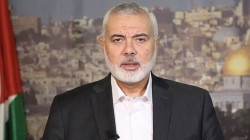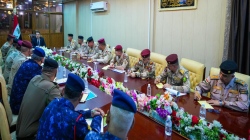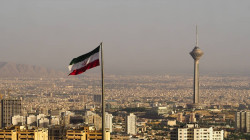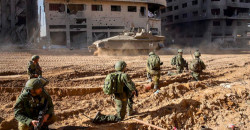A U.S.-Iranian Miscalculation Could Lead to a Larger War, Officials Say
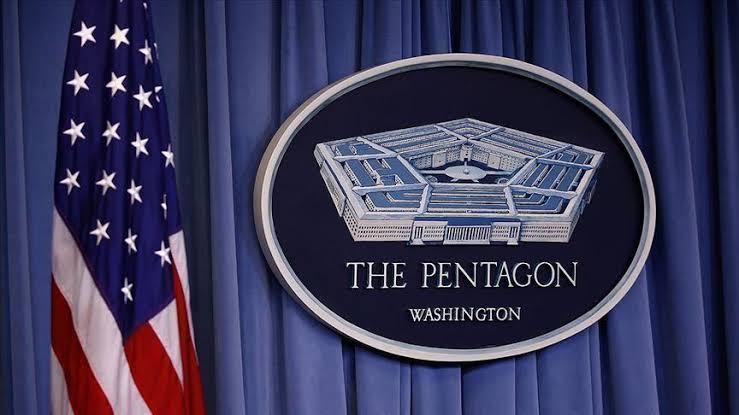
Shafaq News/ Neither Washington nor Tehran wants the conflict in the Gaza Strip to trigger a wider war in the region, officials in both capitals say.
But in the seven weeks since the Oct. 7 Hamas-led attack on Israel, Iranian-backed militias have launched more than 70 rocket and drone attacks against U.S. troops in Iraq and Syria. The Pentagon, for its part, has responded with four rounds of airstrikes, killing as many as 15 people, U.S. officials say.
National security officials fear a miscalculation amid tit-for-tat attacks, combined with each side’s belief that the other does not want a larger fight, could trigger exactly that: a regional conflict, just two years after the United States ended 20 years of war in the Middle East and South Asia.
So far, none of the U.S. reprisal attacks have provoked an escalation, even the one last week in Iraq that killed several militants with Kataib Hezbollah, an Iranian-backed group. The Pentagon said on Tuesday that the attacks had subsided at least temporarily — the most recent being on Nov. 23, the day before an operational pause in the Israel-Hamas war began.
But U.S. intelligence agencies continue to closely watch Iran as well as the groups it supports, which include Hezbollah in Lebanon, the Houthis in Yemen and militias in Iraq and Syria.
“The problem with how people have been looking at this is that we’ve only been thinking about a short war” in Gaza, said Vali Nasr, an Iran expert and professor of international affairs and Middle East studies at Johns Hopkins University.
But, he said, Iran and Hezbollah believe that once Israel is done with Hamas, it will turn its attention to them.
“If the United States is not careful, Gaza is only the beginning of something much, much bigger,” Nasr said.
Defense officials believe that Iran is using the militia attacks to warn the United States of what would happen to U.S. troops and interests in the region if Israel broadens its campaign to encompass Hezbollah or if Israel targets Iran’s nuclear program, as it has in the past.
Israel and Hezbollah have clashed repeatedly along Israel’s northern border with Lebanon since the war began. One U.S. official said the Biden administration wanted to see Israel “lean away” from the skirmishes. But the official did not elaborate on what the administration was doing to keep Israel from opening a two-front war.
The official spoke on the condition of anonymity to discuss private conversations with Israeli officials.
Since the early days of the conflict, Tehran and Washington have exchanged multiple messages saying that neither side wants to escalate the war, Iran’s foreign minister, Hossein Amir Abdollahian, said in an interview.
“We understand the U.S. does not want the war to spread, but we think the U.S. wants the war to intensify,” Amir Abdollahian said. “If the U.S. continues its military, political and financial support of Israel and helps manage Israel’s military attacks on Palestinian civilians, then it must face its consequences.”
Since the Oct. 7 attacks, intelligence officials have been briefing President Joe Biden on the risk of a wider war with Iran. For weeks, intelligence agencies have assessed that Iran wants to avoid a broader conflict — an assessment that, at least for now, still stands.
Guided by that intelligence, U.S. defense officials proposed targeted retaliation against Iranian-backed militias in Iraq and Syria after drone attacks on military bases. As the White House has mulled the options, Avril D. Haines, the director of national intelligence, and Biden have discussed the potential outcomes.
Publicly, the Biden administration says that its strategy is one of deterrence.
In the wake of the Hamas attacks, the Pentagon sought to send that deterrent message, dispatching two aircraft carriers and accompanying warships — one to the eastern Mediterranean Sea, the other near the Persian Gulf — as well as a Marine Corps amphibious task force and dozens of additional warplanes.
But American officials blame Iran and the militias aligned with it for repeated barrages of rocket and drone attacks against U.S. forces in Iraq and Syria.
U.S. warplanes hit munitions storage sites in eastern Syria on Oct. 27 and again on Nov. 8. The Pentagon concluded that there were no casualties in those strikes.
On Nov. 12, U.S. airstrikes on facilities used by Iran’s Revolutionary Guard and the proxies in eastern Syria killed six or seven people. One strike hit a major munitions bunker that Pentagon officials said provided arms for recent attacks.
“Our attacks have significantly downgraded and degraded the access that these militia groups have to these weapons,” Sabrina Singh, a Pentagon spokesperson, said at the time.
Biden administration officials say the calibrated strikes are meant to inflict a cost on Iran and its proxies without igniting a regional war that would drag in the United States. Biden has in recent weeks rejected more aggressive bombing options, senior military officials said.
“Our main goal is to contain and to make sure this conflict is contained within Gaza,” Singh said in November. “Right now, that’s where we see it. We see the conflict remaining within Israel and Gaza and between Israel and Hamas.”
U.S. intelligence agencies say that approach is working so far.
“Even as the United States comes under attack, we assess Iran and Hezbollah are trying to walk a very fine line in the region, avoiding overt actions that risk opening them up to a more direct conflict with either Israel or the United States, while still exacting costs by enabling anti-U.S.- and anti-Israel attacks,” Christine Abizaid, director of the National Counterterrorism Center, told the House Homeland Security Committee on Nov. 15.
The question, the officials say, is whether Biden can keep Israel from expanding the conflict.
Some Republicans in Congress complain that the U.S. military response has been insufficient and actually invites more aggressive actions by Iran and its proxies.
Defense Secretary Lloyd Austin and Biden “may not want to seek conflict, but Iran does, and it will continue to try to kill our troops until they face real consequences, until they’re scared straight,” Sen. Tom Cotton, R-Ark. and a member of the Armed Services Committee, said in remarks on the Senate floor.
“Iran will not fight if we hold the things at risk that they hold most dear: their shock troops in the Iranian Revolutionary Guard Corps, the Quds Force, or, if necessary, sites and facilities in Iran itself,” Cotton said.
The United States has 2,500 troops in Iraq and 900 in Syria, mostly to help local forces fight remnants of the Islamic State group.
More than 60 U.S. troops in Iraq and Syria have suffered injuries in the attacks by Iran-backed militia, about half of those traumatic brain injuries. Pentagon officials say all of the troops are now back on duty.
But senior U.S. military officials say that only luck has spared the United States from more serious casualties. One drone packed with explosives landed on a barracks at the Irbil airbase in Iraq on Oct. 25. It turned out to be a dud, but several service members would most likely have been injured or killed had it exploded, a senior military official said.
(The NewYork Times)
